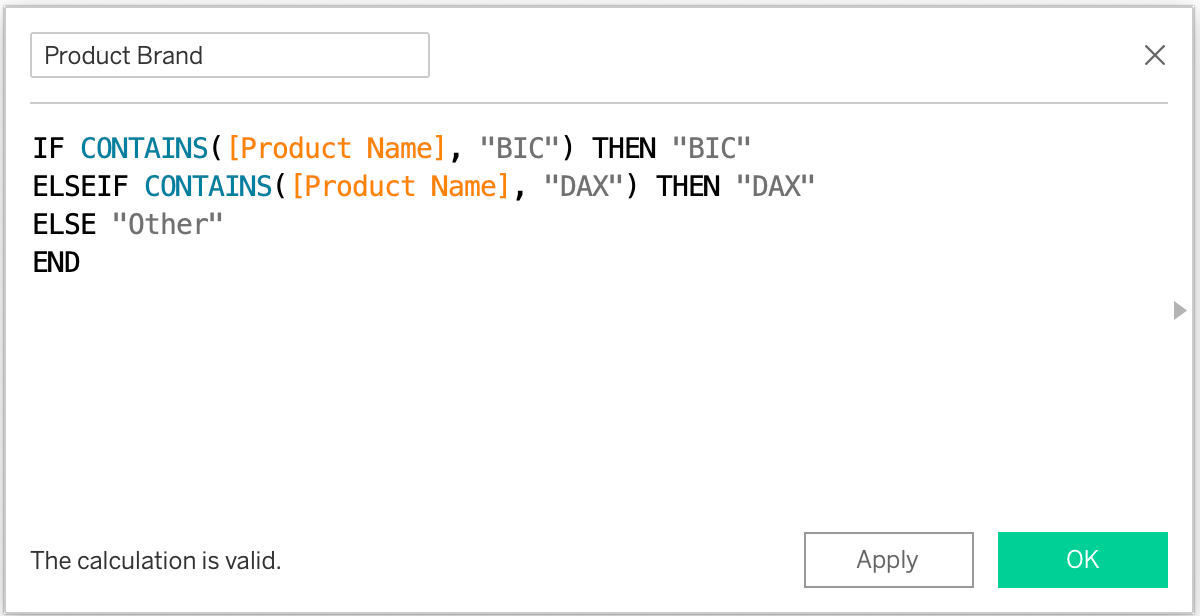Tableau has many functions to solve the mysteries buried within mountains of data. Among these potent functions is the CASE statement, a versatile tool akin to a Swiss army knife in the realm of data management and analysis.
In Tableau, a CASE statement is one of the logical functions used to evaluate a single expression and return a value depending on different conditions. It’s similar to the IF statement, as it evaluates conditions in a hierarchical order. The main difference between the two is that a CASE statement focuses on a single expression, whereas the IF allows for multiple expressions. The CASE function is also faster, less error-prone, and easier to read due to its clear structure.
In this article, we’re going to go over the fundamentals of the CASE statement and how it can enable you to streamline computations, minimize errors, and enhance the clarity of your code. By leveraging the benefits of the CASE function, you can make your data analysis in Tableau more efficient and reliable.
Let’s dive in!
Tableau CASE Statement Fundamentals
In the following section, we’ll delve into the syntax of the CASE statement, explore its appropriate usage, and highlight the key distinctions between the CASE statement and the IF statement.
1. Syntax and Usage
The CASE statement is one of the logical functions in Tableau that allows you to compare a specific expression with a set of values. It’s important to note that the CASE focuses on a single expression.
Each line starting with WHEN checks the logical statement and matches expression by comparing the value with the same expression. If there is an exact match, the function returns a specific result. However, if there is no match, an ELSE value is returned instead.
The syntax for the Tableau CASE statement is as follows:
CASE [expression]
WHEN value1 THEN result1
WHEN value2 THEN result2
...
ELSE default_result
END
As an example, using a dataset of sales performance, you could create a CASE statement to label the quarters of the Order Date:
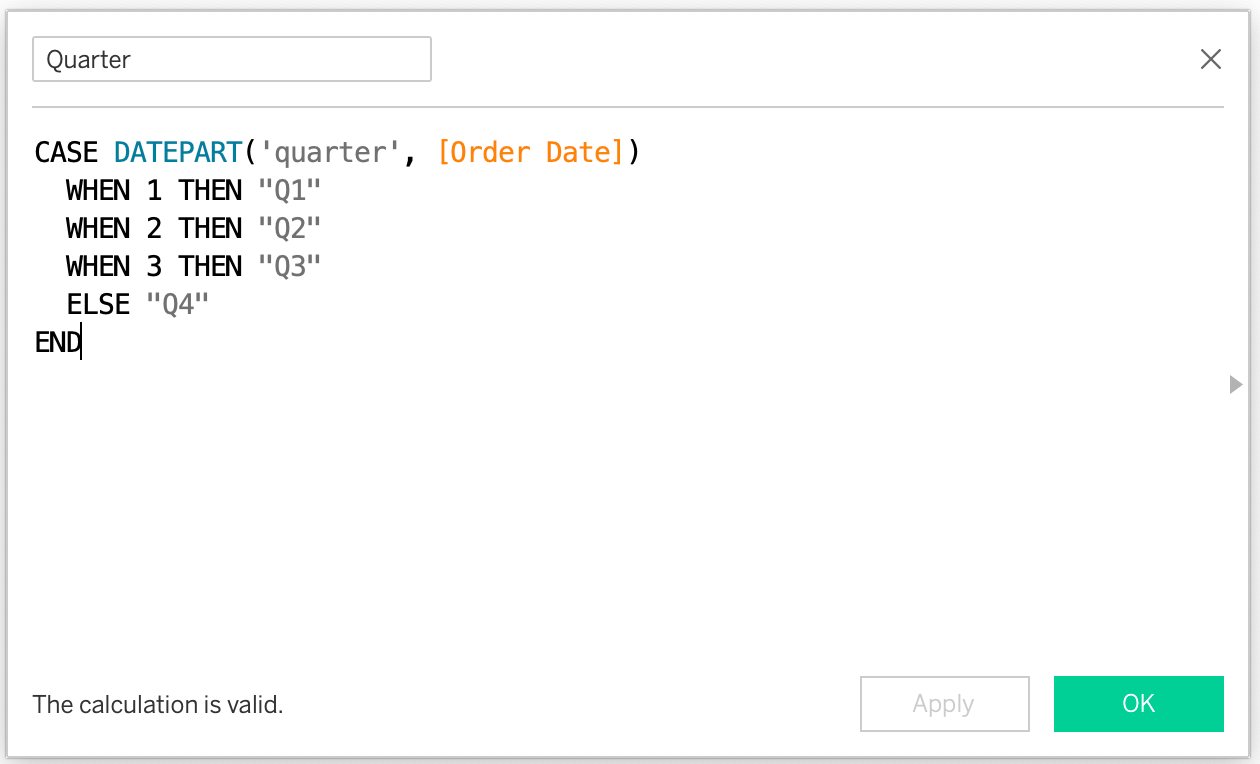
2. CASE vs IF Statements
The main difference between CASE and IF statements in Tableau lies in their usage. CASE statements are used when you need to evaluate a single expression against multiple values and are generally simpler to write.
IF statements, on the other hand, allow for evaluation of multiple expressions and conditions. They are more versatile but can become more complex as conditions increase.
For instance, if you want to evaluate two conditions, you can use an IF statement:
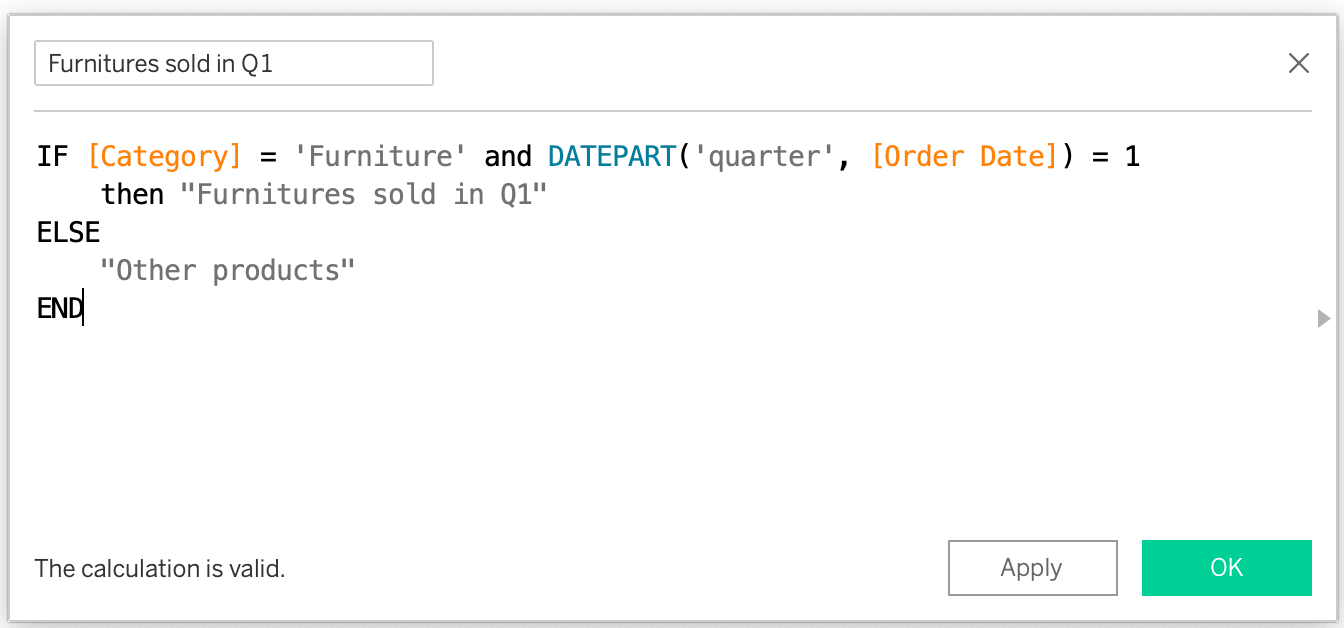
As you can see in the above syntax, the CASE statement can always be rewritten as an IF function. Let’s take a look at an example of using the IF statement to label the quarters of the Order Date:
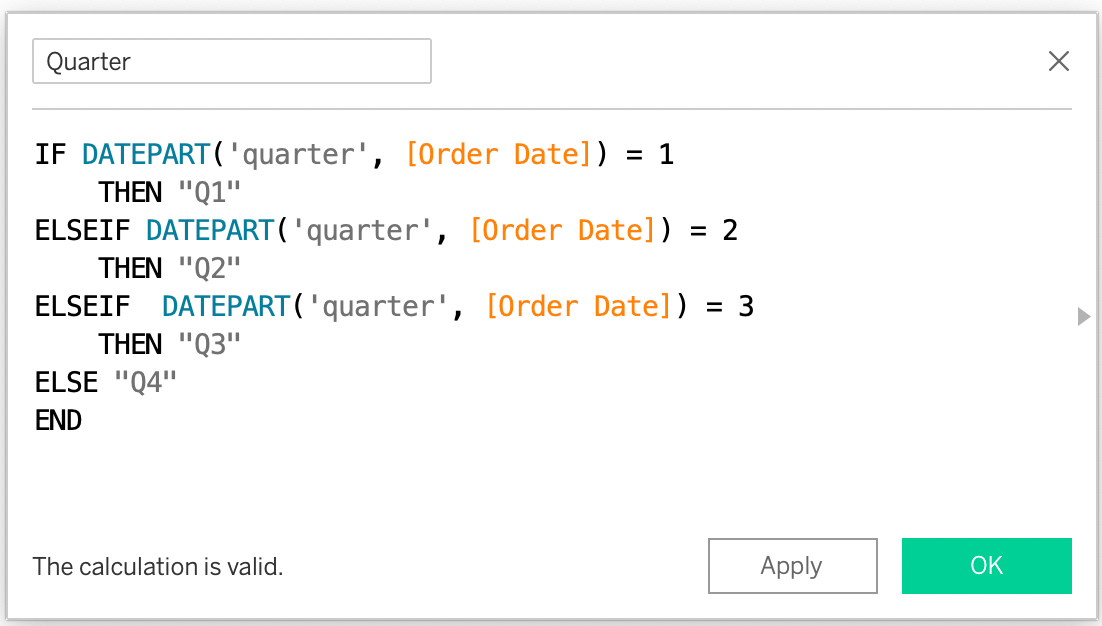
Now that we’ve gone over the fundamentals of Tableau, let’s move to its key components in the next section!
Key Components of CASE Statements
Now, let’s explore the intricacies of the CASE statement syntax in more detail.
The key components of a Tableau CASE statement are:
- Expression: The field or parameter being compared against a list of values.
- Values: A sequence of values to match the expression against.
- Results: The corresponding return value for each matched value.
- ELSE: The default result that is returned when no match is found.
- END: Closes the CASE syntax.
When working with the function, it’s important to remember to strictly follow its structure. Failure to do so may result in an error message indicating a problem with the calculated field. So, to ensure smooth execution, be diligent in adhering to the correct syntax of the function.
When to Use CASE Function in Tableau?
The CASE statement has clear advantages over the IF in certain scenarios:
- Simplicity: The CASE statement has a simpler syntax, making it easier to read and less prone to errors, especially when you need to refer multiple times to the same expression. Its straightforward structure enhances clarity and maintainability.
- Speed: When dealing with large datasets, computation time becomes crucial. Since the CASE statement evaluates only one expression, it can provide faster results compared to the IF. This can significantly improve efficiency when working with extensive data.
By leveraging the simplicity and speed of the CASE statement, you can enhance your data analysis process, making it more efficient and reliable.
Examples and Scenarios Using CASE Statements
In Tableau, the combination of parameters and CASE statements can be extremely powerful and enable the creation of interactive dashboards. This allows users to adjust their views and fully leverage the capabilities of Tableau.
Using Parameters
Let’s consider a scenario using the Sample Superstore dataset, which includes transactional data from a reseller company. The dataset contains columns such as ‘Sales’ and ‘Profit’.
To provide flexibility to the user, we can utilize a parameter that allows them to choose between displaying either ‘Sales’ or ‘Profit’ on the view. Here’s how you can set it up:
- Create parameter called ‘Metric Selection’ with two string values: ‘Sales’ and ‘Profit.’ This parameter will serve as the user’s selection tool.
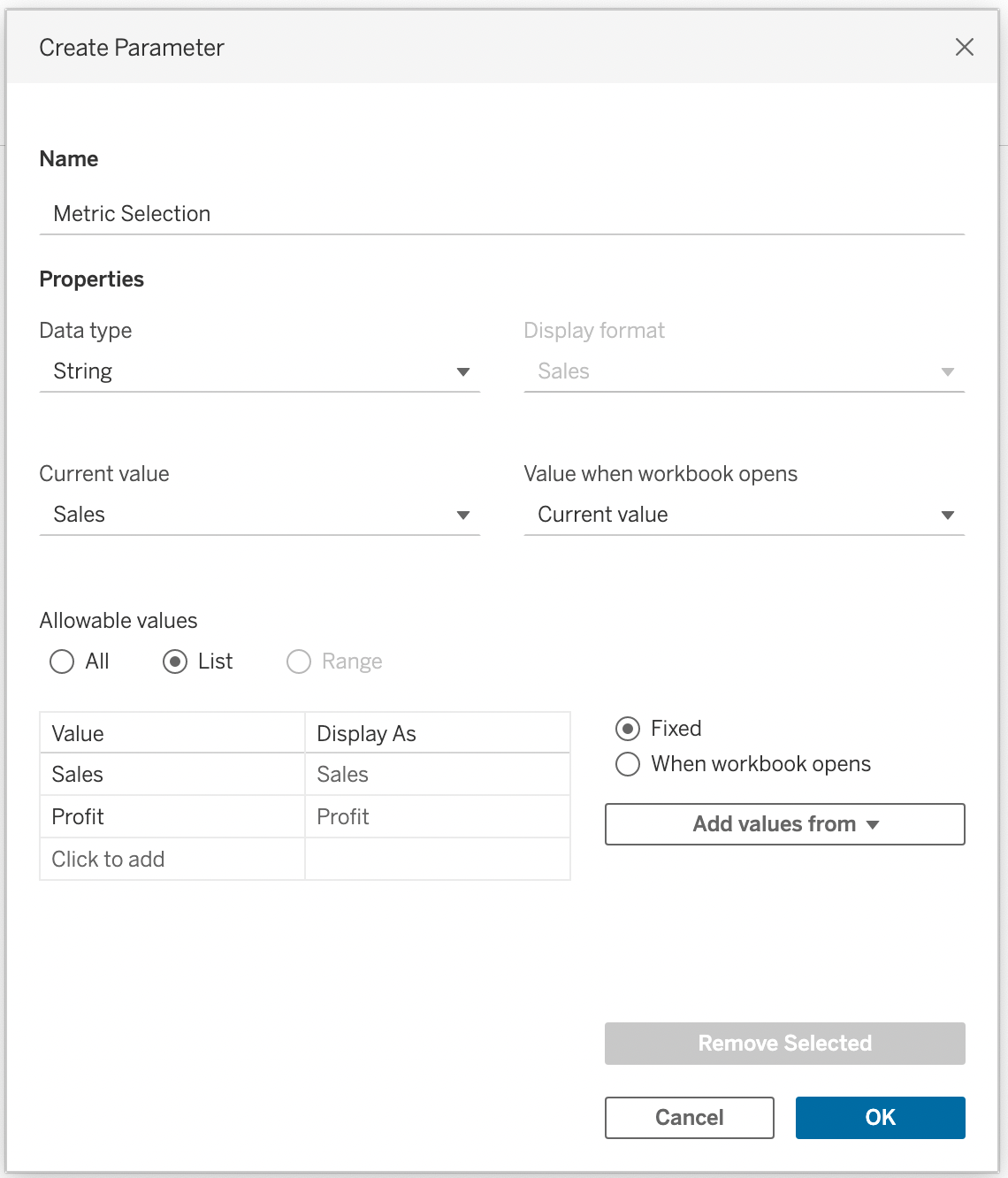
- Once you’ve set up the parameter, you can use a CASE statement to dynamically display the selected metric based on the user’s choice. This enables the user to switch between viewing either the sales or profit data on the dashboard, enhancing interactivity and customization.
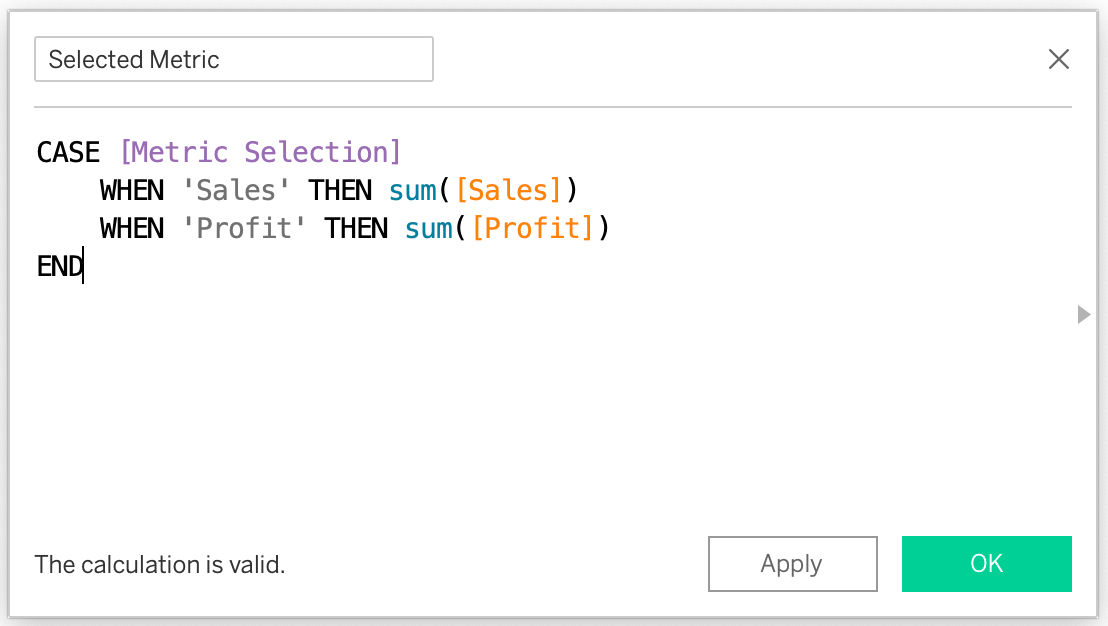
- In the parameters settings, click on ‘Add to sheet’.
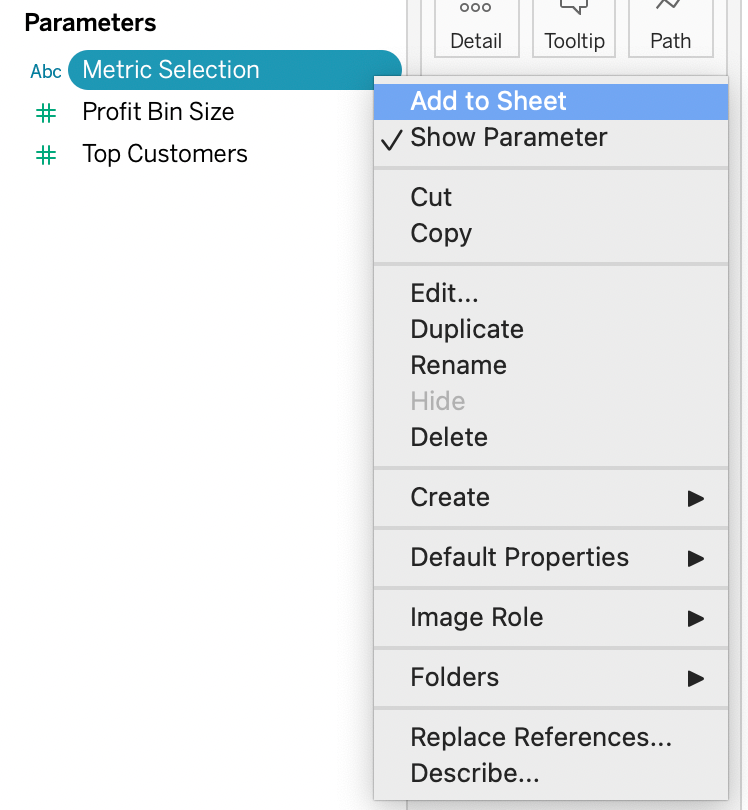
- Drag the ‘Selected Metric’ measure created by this calculated field to the Rows shelf and the ‘Order Date’ field to the Columns shelf. Now, users can switch between ‘Sales’ and ‘Profit’ using the ‘Metric Selection’ parameter, which will alter the view based on their selection.
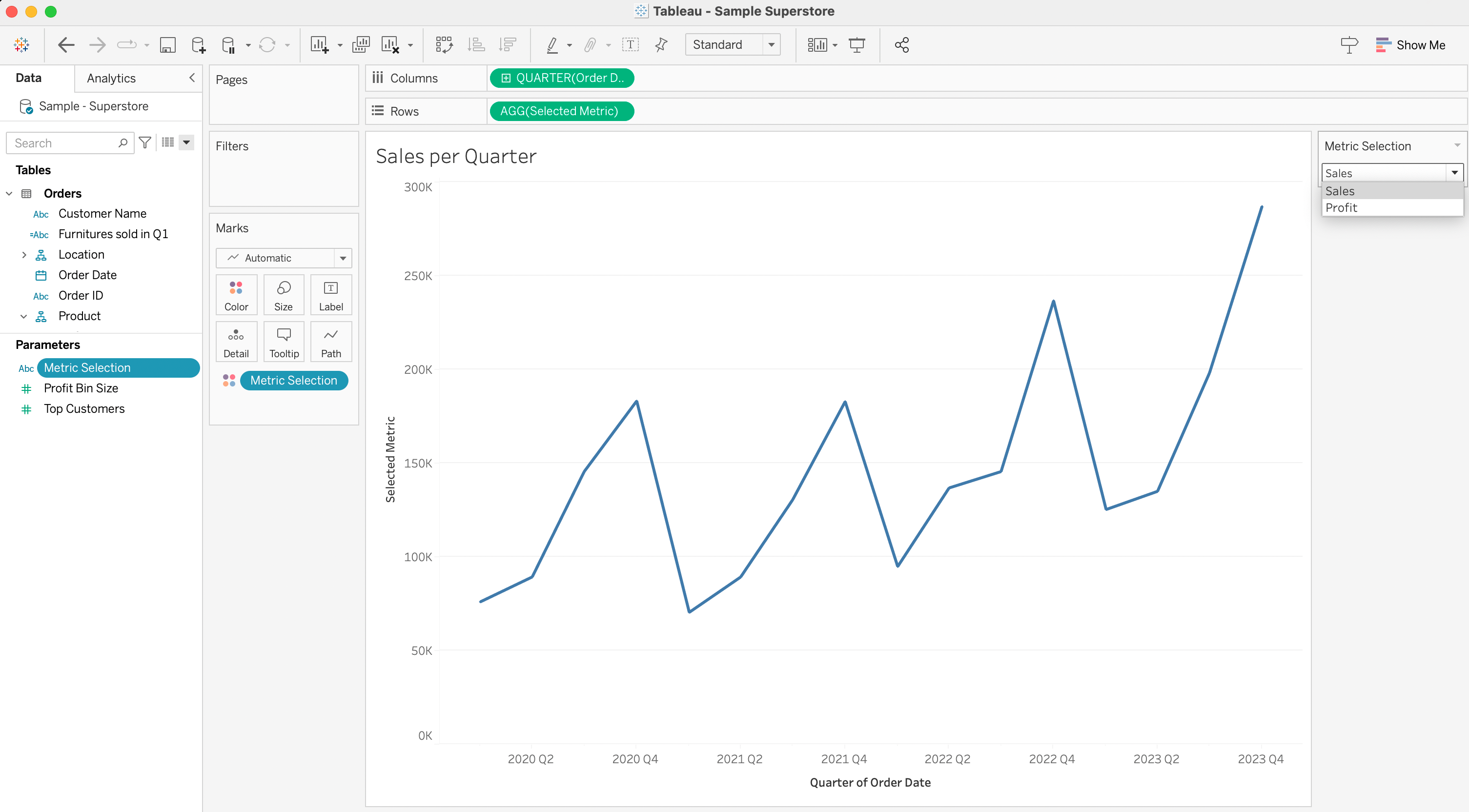
By harnessing the power of parameters and combining them with CASE statements, you can create engaging and user-friendly dashboards in Tableau that empower users to explore data from various perspectives.
Optimizing CASE Statement Performance
In Tableau, using CASE statements can significantly enhance performance, especially when working with large data sets.
Compared to IF statements, CASE offers better readability and often provides superior performance when dealing with simple logic. However, for complex logic, IF statements remain the suitable choice due to their increased flexibility.
To optimize the performance of CASE statements in Tableau, you can follow a few key practices:
- Use a single expression: Try to use a single expression in a single field for your CASE function, as this will minimize the number of calculations needed. If your work requires multiple expressions, consider using nested CASE statements where appropriate, but do so cautiously to avoid over-complicating your logic.
- Keep conditions simple: When using logical operators, try to limit the number of conditions in your WHEN clauses to only those necessary for the desired outcome. Unnecessary conditions in your data set can slow down performance and create confusion for those trying to comprehend your logic.
- Order conditions wisely: Organize your conditions, placing the most frequently satisfied conditions at the top of the CASE statement. Tableau takes a step-by-step approach and will evaluate those conditions first, leading to reduced processing times.
By applying these practices to your Tableau work, you can optimize the performance of CASE statements and create more efficient calculations for your data visualizations.
Common Challenges and Solutions
While working with Tableau CASE statements, a few common challenges may arise. This section will discuss these challenges and their solutions to enhance the use of CASE expressions in Tableau.
1. Nested CASE WHEN Statement
One challenge is handling multiple conditional statements nested one inside another.
For instance, you might want to categorize the profit and sales data based on specific countries and regions. To address this, use a case statement that considers country and region dimensions as separate cases.
Utilize boolean logic in the CASE expression, incorporating AND and OR operators when needed, like in the following syntax:
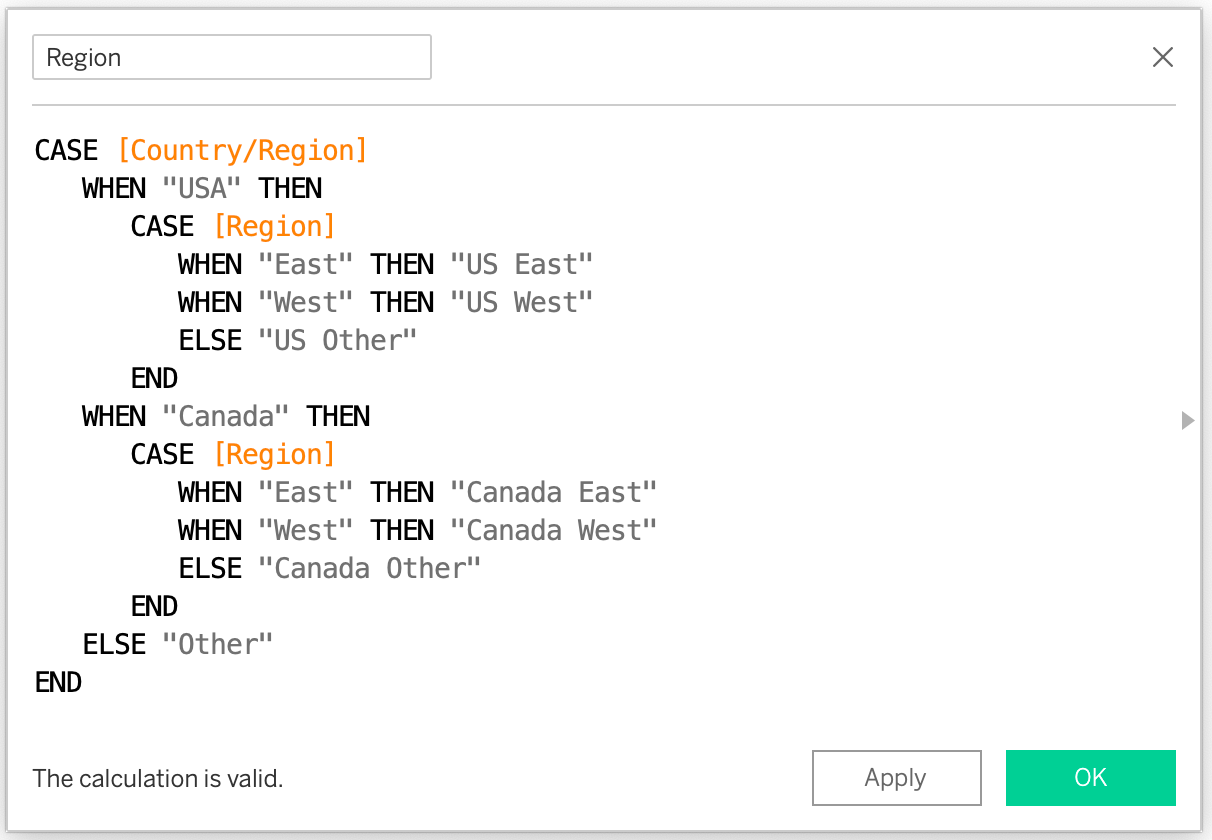
2. Continuous Variables Inside CASE Function in Tableau
CASE function checks only if there is an exact match between the tested expression and the WHERE clause. Hence it’s not possible to apply it to continuous metrics and apply logical functions such as greater or equal to, less, etc.
3. Default Value
Lastly, it’s crucial to have a default return expression in your case statement. Cases might arise in which no condition is met, resulting in NULL values. By specifying a default return value, such as ELSE “Other” at the end of the case statement, you can avoid unanticipated outputs and maintain the dataset’s logical consistency.
Final Thoughts
The Tableau CASE statement is a powerful tool in the realm of data management and analysis. It provides a versatile solution for evaluating single expressions and returning values based on different conditions. With its clear structure and ability to handle multiple scenarios, the CASE statement proves to be an efficient alternative to the IF function.
By leveraging the benefits of the CASE statement, you can streamline computations, minimize errors, and enhance the clarity of your code. Its simplicity and speed make it a valuable asset when working with large datasets. The ability to combine parameters with CASE statements further empowers users to create interactive dashboards that maximize the potential of Tableau.
While challenges may arise, such as nested CASE WHEN statements or working with continuous variables, there are solutions available. Handling multiple conditional statements can be achieved by incorporating boolean logic, and default return values can help maintain logical consistency.
The CASE statement equips analysts with a powerful tool to unlock the mysteries hidden within complex data. By mastering its syntax and understanding its capabilities, you can enhance your data analysis process, make informed decisions, and deliver impactful insights!
Not sure if you were lucky enough to be there, but if you missed it, the 2023 Tableau conference is not to be missed!
Frequently Asked Questions
Are there any limitations to CASE statements in Tableau?
Yes, there are some limitations to CASE statements in Tableau. Firstly, CASE statements in Tableau can only test equality; they cannot test conditions such as greater than or less than. Secondly, the expressions in each WHEN clause must be constant and cannot be another expression. Also, all expressions must be of the same data type. If they are not, Tableau will attempt to convert them to a common data type.
How to use CASE statement with strings in Tableau?
To use a CASE statement with strings, simply include the string values within the WHEN clause, and use double quotes or single quotes as necessary. For example:
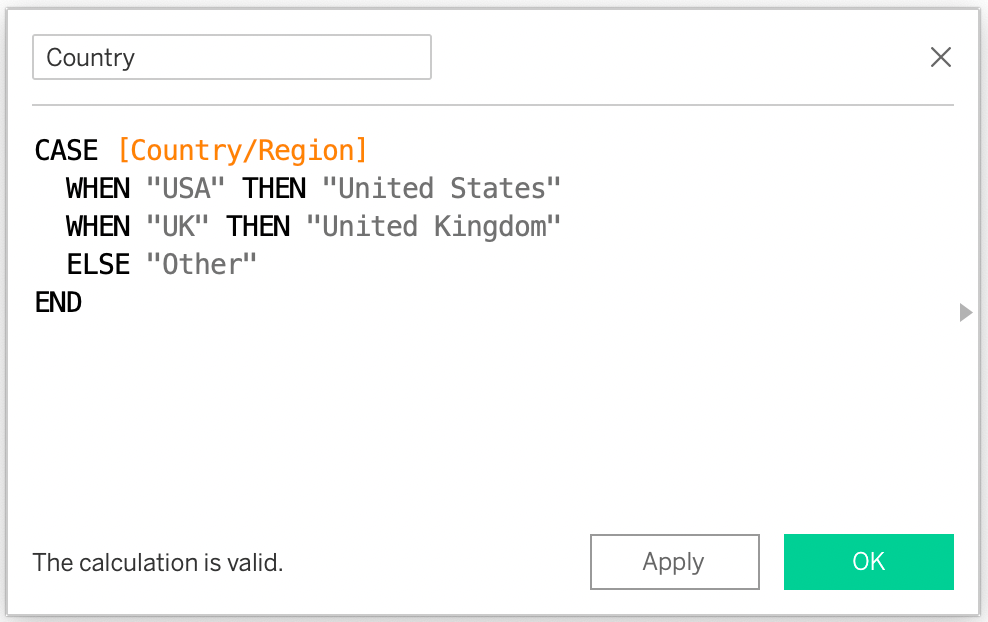
What is the Syntax for Tableau CASE Statement with Multiple Conditions?
In Tableau, you cannot use multiple conditions directly within a CASE statement. Instead, you can use logical functions such as IF, IF, or multiple nested IIF statements to evaluate multiple conditions. The following syntax illustrates it:
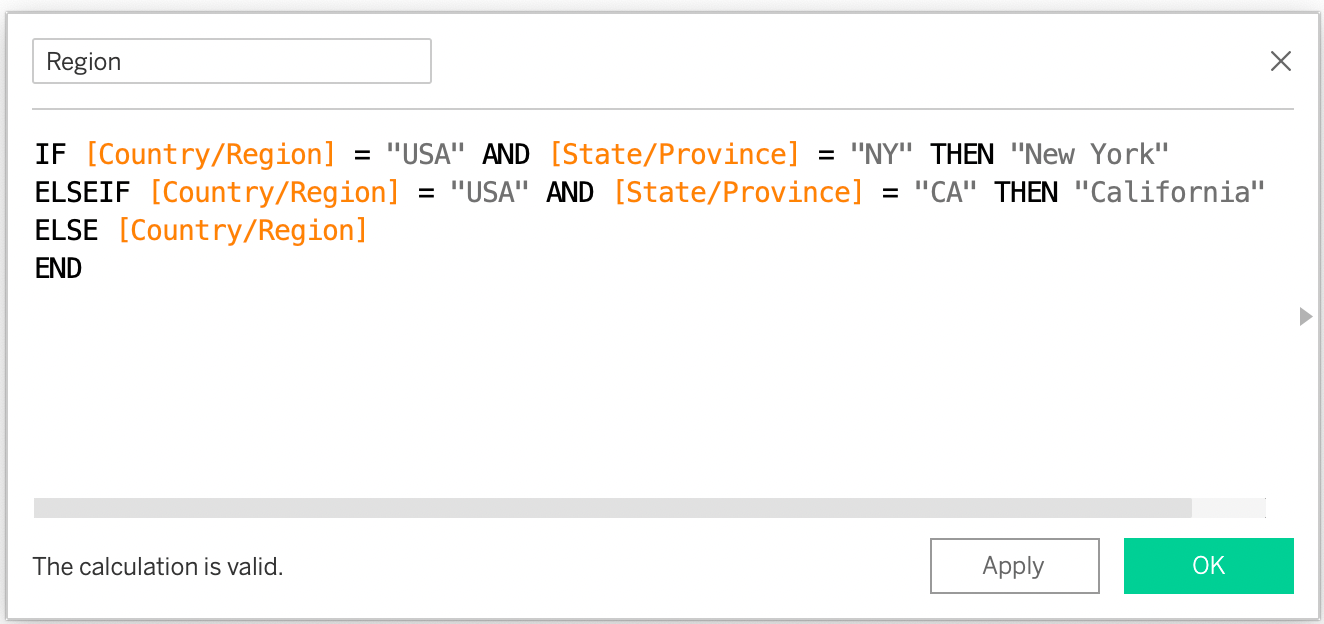
Can we use the LIKE operator within a CASE statement in Tableau?
No, you cannot use the LIKE operator directly within a CASE function in Tableau. However, you can use an IF combined with the CONTAINS function to achieve a similar result. For example:
